Glasgow School of Art graduate Ross Hogg
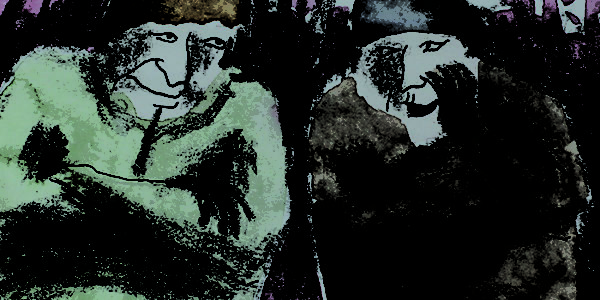
Ross Hogg is an animation filmmaker currently based in Edinburgh.
He graduated from the Glasgow School of Art in June 2013, having made two fully animated short films, and has since had them screened at some of the worlds major international film festivals.
From a quirky story about a man mistaking his wife for a hat to a scene depicting the crowd of a football match, all of Ross’ work is handled with care and focus on the concept behind the visuals. Precise animation and a distinctive illustration style with just the right amount of abstraction creates an immensely powerful and a deeply atmospheric portfolio of work.
We caught up with him to find out more.
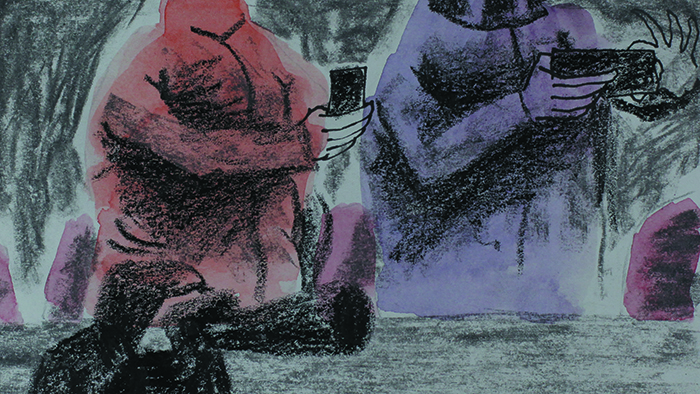
Can you describe a typical day?
One of the things I really enjoy about the sort of work I do is that working days can vary depending on what projects I have on. Working as a freelance filmmaker means that whenever a job comes along, more often than not, I have to put everything in to that for the length of the brief – and this means that I have to shelf any personal projects I have on the go. In periods of down-time, between jobs, I think it?s extremely important to return to any personal projects and continue to be productive as this helps develop me as a filmmaker, allows me to make what I really want to make, and also helps inform the type of work or commissions I might be offered next.
Ideas are what drive the creation of work, but in the same sense the creation of work is essential in feeding new ideas.
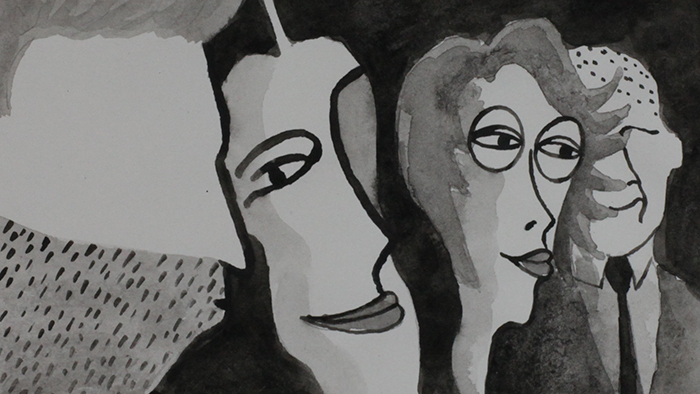
Animation can be a very long, slow process. Does it ever get frustrating? What’s your creative process like?
My work is mostly hand-drawn as I like the tactility of working with different media straight on to paper, but this changes depending on the project and how I think I can best communicate an idea. It can be an extremely time consuming process depending on the chosen method of animation, but I often find the sense of achievement you feel when completing a sequence of movement and then watching it play back in realtime is really rewarding. I think it?s quite important to let the creative process happen quite organically – the fact that it takes some time to produce animation can be a benefit as it provides a lot of time for reflection during production.
Whose work have you been inspired by recently?
My first film, The Man Who Mistook His Wife For A Hat, was an adaptation of one of Oliver Sacks? books of the same title. His writing extremely is evocative and lends itself really well for more visual explorations. In terms of filmmakers, I have always found the work of people like Norman McLaren and Frederic Back really inspiring and more recently filmmakers such as Jonathan Hodgson, Caroline Leaf and William Kentridge have had some influence of the type of work I aspire to make. There are so many brilliant films being produced right now that attending a few festivals or even browsing Vimeo can give you a flavour of the changing short film landscape at the moment and can be a real source of inspiration.
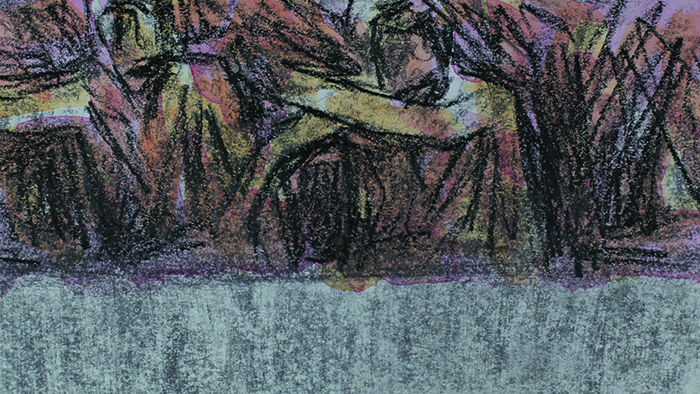
Is collaboration something you are interested in doing?
There are a lot of filmmakers and animators who I admire and would definitely love to collaborate with. I’ve met a lot of really great people in the last year or so who are exceptionally talented in their respective fields of expertise and there has already been some talk of potential collaboration in the near future. This kind of opportunity, working with people you get on with, trust, and most importantly, are great at what they do is something I?m really keen to get off the ground and hopefully secure some money to do so.
You are currently based in Edinburgh but studied in Glasgow. What do you think the creative scenes are like in these cities and how do they differ? Do you have a favourite?
I’d say Glasgow and Edinburgh are both very vibrant cities to be in. I was mostly a student when I was based in Glasgow so didn’t really experience working life as such there. In terms of getting work, I think you can sort of base yourself anywhere – now that files can be sent pretty immediately online – but it is extremely important to try and get to as many festivals and events where it is possible to mix with similar people and make new contacts from around the world. I’d say I prefer to work in Edinburgh at the moment but that’s solely down to the filmmakers I’ve surrounded myself with and the creative community at Summerhall which I’m now a part of.
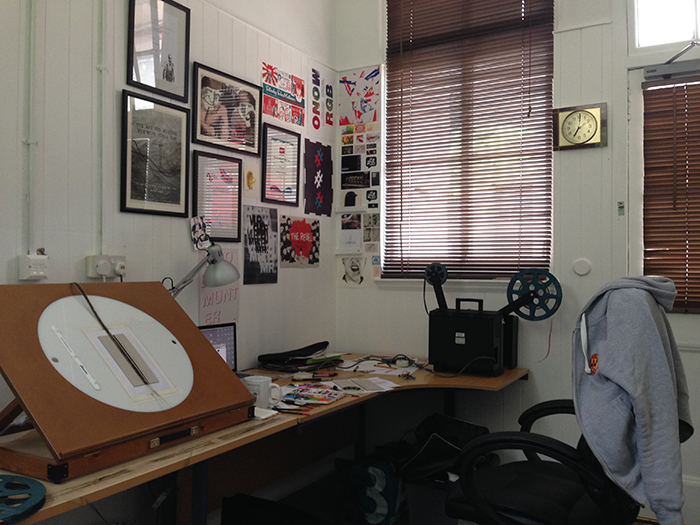
What is your studio like? And what would you change about it?
My studio is in the courtyard of Summerhall in Edinburgh and I share the space with a friend, Will Anderson. It’s an excellent place to work and a really vibrant atmosphere to be a part of. There are lots of small artist and business studios in the complex and some really interesting, creative people who contribute to the overall feel of the place. I worked from home for the best part of a year and the difference having a studio in Summerhall has made to my working life has been very noticeable. I think it’s really important to surround yourself with people who are creating interesting work as it can give you more motivation and inspiration to continue to develop your own practice. There’s also a pub and a brewery in the same courtyard so there’s not much I’d change at the moment!
If you could explore the studio of any artist (dead or alive) who would it be & why?
It’d probably have to be Norman McLaren‘s because he was such a pioneer and all of his films were endlessly innovative. I’d imagine his studio would be full of painted 35mm film strips and interesting rigs made specifically for different types of filmmaking experiments. That would be amazing to explore!
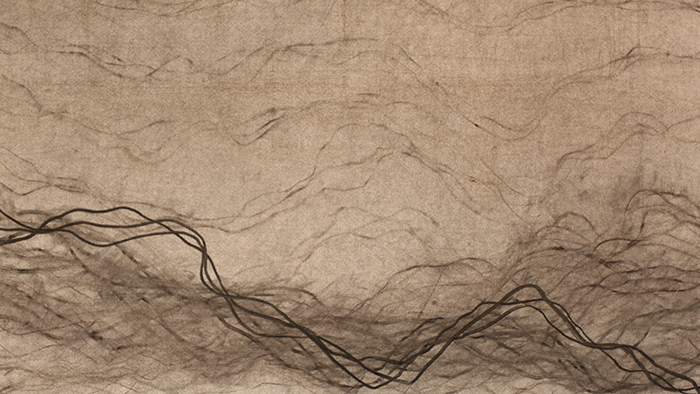

Can you share a highlight so far?
There has been some real highlights so far. Both times at Edinburgh International Film Festival were excellent along with trips to Ottawa and Annecy – I was able to meet a load of friendly, talented filmmakers and having my films screen alongside theirs was an honour. Being nominated for a Scottish BAFTA in November 2013 and getting to share that experience with two friends, Claire Lamond and Gavin Robinson, was a privilege and great fun. This year I was fortunate to win the Scottish BAFTA New Talent Award and the Celtic Media Award for animation with my second graduate film, Spectators, which was well beyond any expectations I had for that film. My only regret there was having a bit too much to drink and not preparing a speech…

What’s next for you? Any personal projects / fun jobs you’d like to mention?
I’m working on a film at the moment which is entirely on 16mm film responding to a soundtrack which was made using the film strip too. It?s a collaboration with a sound designer I know and his part of the project is great – I just need to try and live up to the sound he?s given me! I’m also beginning another collaborative project with a documentary director called Duncan Cowles. The aim with this one is to make a short animated documentary film about the memories of my 91 year old grandmother but we?re still waiting to see if we can get some funding to make that one.
And finally, where do you see yourself in 5 years?
Who knows!? If I can continue to develop as a filmmaker and make films I feel strongly about whilst enjoying it at the same time, I?d be delighted. I?ve always been quite an ambitious person but I think, at this stage, it?s more important to focus on making work which I feel is honest and intrinsically exciting than thinking too much about where I want to get to or end up.




